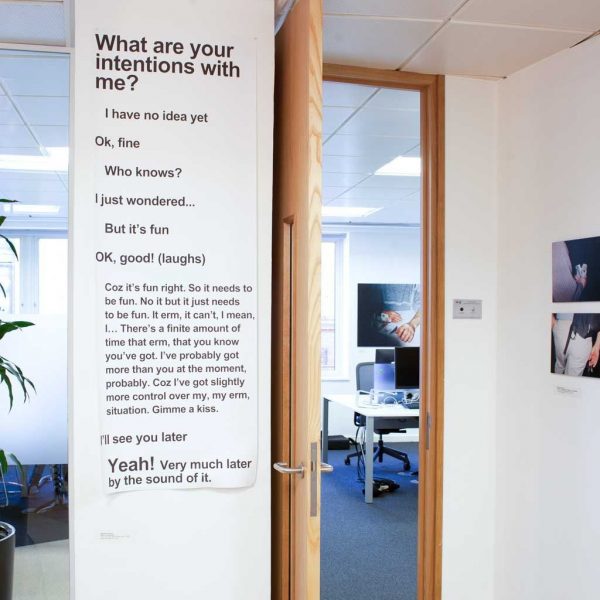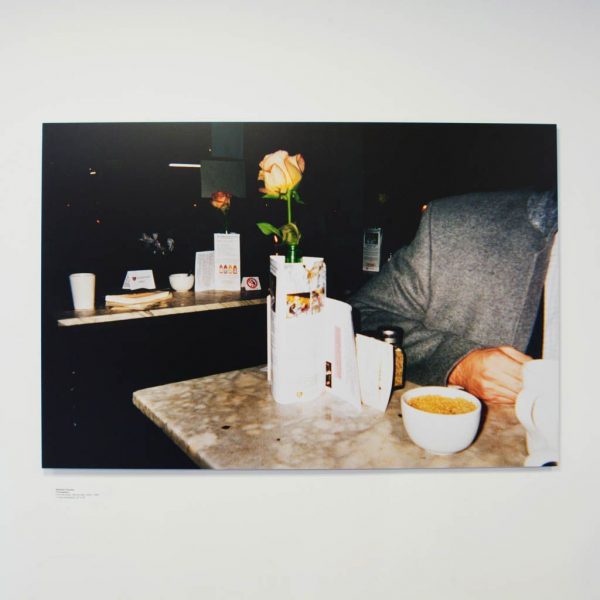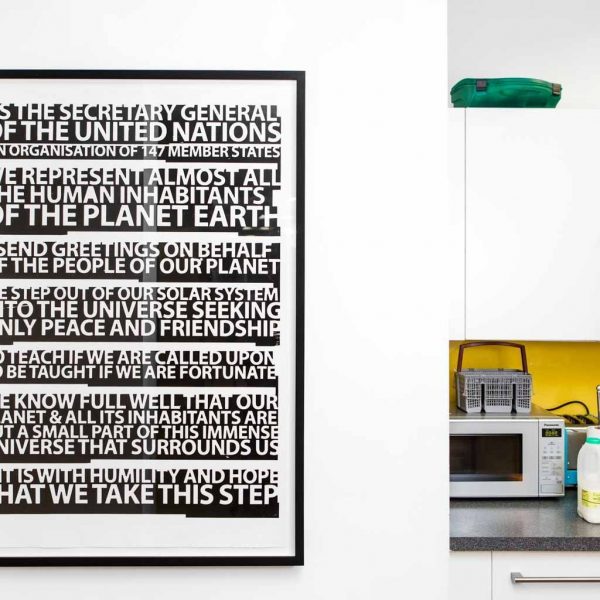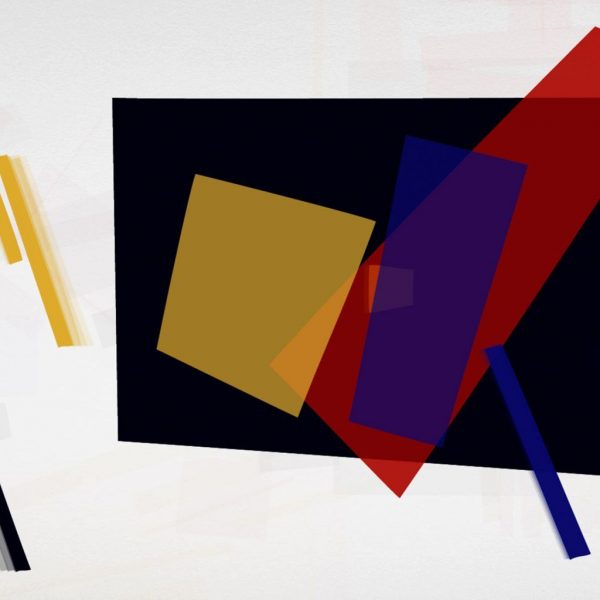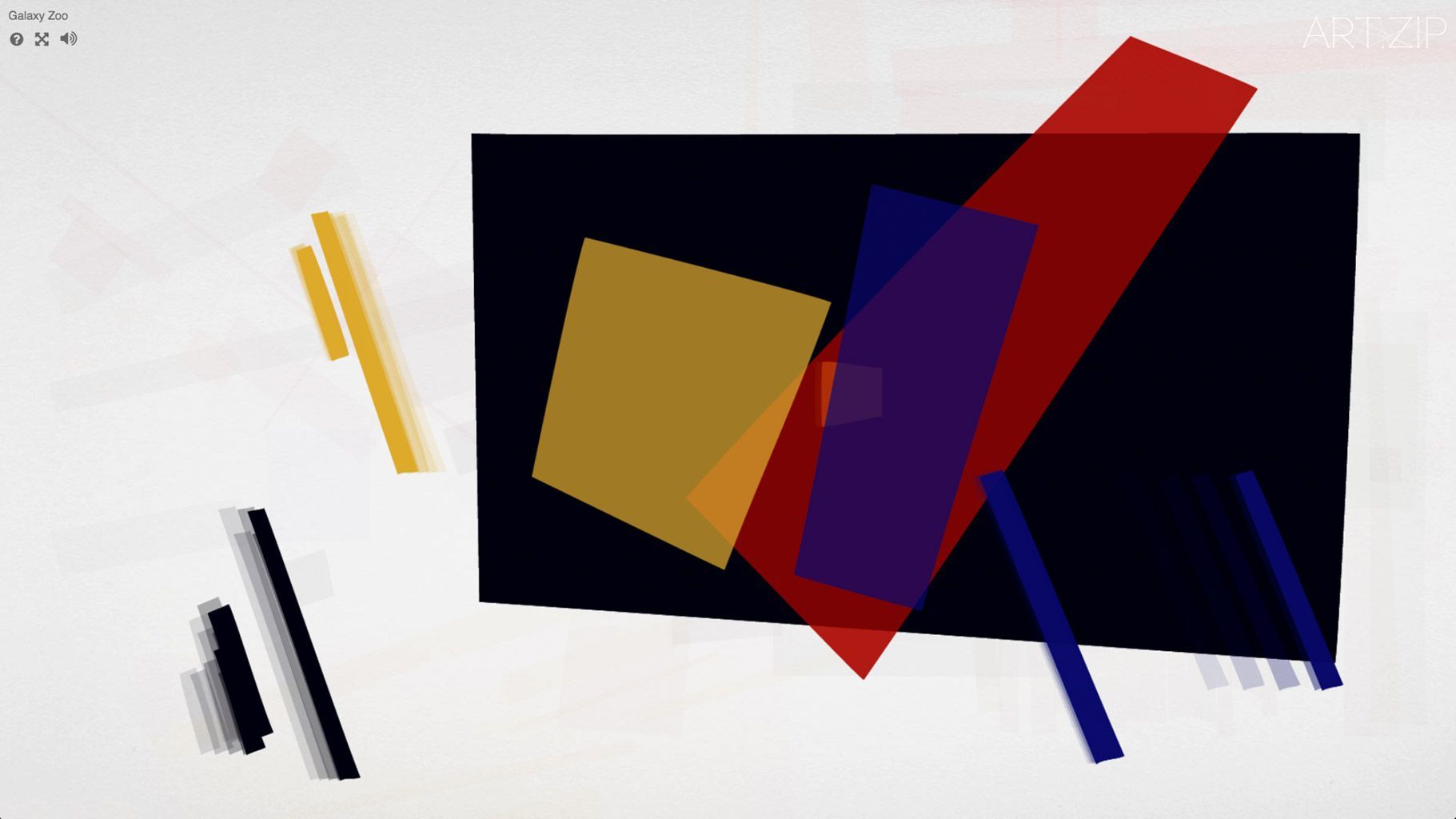
Interviewed and text by 採訪及撰文 x Nils Jean 尼爾斯·吉恩
Translated by 翻譯 x Cai Sudong 蔡蘇東
Hannah Redler is a curator of cross-disciplinary projects between art, photography, science and technology. Prior to her current role as associate art curator for the Open Data Institute, Hannah was Head of Science Museum Arts Programme from 2005-2014. At the time when the retrospective exhibition Electronic Superhighway has just finished, Hannah talks to us about her practice and the ways in which the field of new media has evolved, providing us an insightful view on the directions and upcoming challenges of this unstable yet rich field of practices.
漢娜·瑞德勒是一名策展人,她所涉足的領域橫跨藝術、攝影和科技。她目前是公開數據學院(Open Data Institute)的聯合藝術策展人,在這之前的2005至2014年,她是科學博物館(Science Museum)藝術項目的主管。適逢數字藝術回顧展《電子高速公路(Electronic Superhighway)》的結束,漢娜與我們談到了她的策展實踐和新媒體的進化,這給我們提供了一個極具洞察力的視角,得以審視這個流動不居卻又成果豐碩的領域的新方向和面臨的挑戰。
ART.ZIP: You trained as a fine artist, where did the overlap between art and technology started, has it always been part of your practice?
HR: It couldn’t have been further away. I was a fine art painter in a very traditional art school, where I painted landscape and I did life drawings. I started working with photocopying technology towards the end of my degree. I graduated not only in the middle of the recession of the 1990s but also at the time where YBAs were at their heights. There was a lot of amazing art around, but there was also a lot of dross. Rather than being an artist, what I started to find more urgent was what I saw as the growing field of interactive media technology. I co-founded a digital media production company with some friends. The World Wide Web was in its infancy, commercial browsers were not available and no one commissioned websites. We made CD-ROMs for several years. We had all sorts of clients, from book publishers to museums and the BBC. It was a commercial company but we had a very artistic ethos. We were determined to develop new software with every project we did. We employed some amazing coders, so software development was at the core of what we were doing. I became really aware of the software art community and more interested in the role that computers can potentially have in museums, which influenced my second degree at the Royal College of Art in Curating.
ART.ZIP: 您過往接受的是藝術家教育,那麼對您來說,藝術和科技的重合是從何處開始的,這兩者的結合一直是您實踐的一部分嗎?
HR: 這兩者本來離得不能再遠了。我在一個非常傳統的藝術學校讀書,我在那裡學習風景畫和寫生,所以我算是一個畫家。在我攻讀學位的最後階段,我開始和復印技術打交道。我畢業的時候,不僅是1990年代經濟消退的時候,也是“年輕英國藝術家”(YBA)登峰造極的時候。那時身邊有不少不錯的藝術,但也有不少垃圾,我不是很確定自己要不要當一個藝術家,但我看到了互動多媒體技術的日漸壯大——這是更迫切的事情。我和幾個朋友一起創立了一個數字媒體制作公司。當時萬維網的發展還處初期,沒有商業瀏覽器,也沒有人委托建立網站。我們做了幾年的光盤數據業務。我們有著各種各樣的客戶,有圖書出版人,也有博物館,還有BBC。我們當時的公司是商業公司,但我們很有藝術精神。我們在進行每個計劃時都決心開發新的軟件。我們僱用了非常出色的程序員,因此軟件開發是我們的核心。我開始了解到軟件藝術圈子,對於計算機在博物館中可能扮演的角色,我也開始有了濃厚的興趣。所以,我的第二個學位便是在皇家藝術學院(Royal College of Art)讀的策展专业。
ART.ZIP: You did a lecture at the Open Data Institute where you said that whether we use the term digital art or new media, it is all art in the end. How do you articulate the relationship between art and technology now?
HR: Well, first of all, I don’t like the term digital art because I think it’s really reductive. I think that it suggests one type of practice in a field, which I prefer to call new media. I think that V2_ in Rotterdam have the best description, which is unstable media. The problem with ‘new’ is that it isn’t always ‘new’.
ART.ZIP: 在公開數據學院的一個講座上,您說,不管我們用詞是“數碼藝術”還是“新媒體”,歸根結底,我們說的是藝術。您現在是怎麽界定藝術和科技之間的關係的?
HR: 首先,我不喜歡“數碼藝術”的這個稱謂,因為這種稱謂的局限性太強。我覺得它指的是某一個領域的某種藝術實踐,所以我比較傾向“新媒體”這種說法。我想鹿特丹V2_變動媒體研究中心的描述是最好的,即“變動不定的媒體”。我所感興趣的那些作品的大部分創作者,他們的作品和電子、軟件或者網絡有關。有段時間,這些作品都被稱為新媒體藝術,但是這個稱謂是有問題的,這些媒體並非都那麽“新”。
ART.ZIP: Yes, and once you’ve labelled it ‘new’ you haven’t answered what the newness might be. The term digital is also an attempt to come back to an understanding of the technology. In Digital Folklore, Olia Lialina and Dragan Espenschied explain that the technology we possess now has never been so sophisticated and yet our understating of it has never been so minimal.
HR: What really interests me, if you look at the arc of video art practice compared to computer art, digital art or new media art, is that what you get is the pioneers at the beginning challenging the form right down to the material level and later people work with different issues. Software art pioneers like David Rokeby wrote their own code, the net artists wrote their own code and in video art artists like Nam June Paik and Bill Viola were really pushing the material qualities, like Paik’s Magnet TV where he’s disrupting the wave form and Bill Viola affecting the construction of cameras with Sony. The YBAs in the 1990s were mostly working with the content of the video and, often criticised for that, although I like the work Douglas Gordon, Georgina Starr and others made. Similarly in digital practice we now see a lot of younger artists working with the content of online imagery.
ART.ZIP: 是的,我們把它們貼上“新”標簽的同時卻沒有回答“哪裡新”的問題。“數碼”的說法也是理解技術的一種嘗試。在《數碼民俗學(Digital Folklore)》中,奧裡亞·連麗娜(Olia Lialina)和卓甘·埃斯彭施德(Dragan Espenschied)說到,我們目前所擁有的技術比以往任何時候更加先進,但我們對它的了解卻比以往任何時候更少。
HR: 真正讓我感興趣的是,如果妳對比一下視頻藝術和電腦藝術、數碼藝術或者新媒體體藝術的發展,妳會發現,那些真正的先鋒一開始就已經在物質層面上挑戰藝術的形式,繼而挑戰其他問題。像大衛·洛克比(David Rokeby)這樣的軟件藝術家,他們是自己寫代碼的,網絡藝術家他們也是自己寫代碼的。而像白南準(Nam June Park)和比爾·維奧拉(Bill Viola)這樣的視頻藝術家更是挑戰了藝術的物質性。從白南準擾亂波形圖的《磁铁电视(Magnet TV)》到比爾·維奧拉影響著索尼攝像機的構造。到1990年代的YBA,他們更關注內容,這也是他們經常被批評的原因,雖然我也挺喜歡道格拉斯·哥頓(Douglas Gordon)、喬治婭娜·斯塔爾(Georgina Starr)和其他人的作品。同樣地,在數字藝術實踐裡,我們看到許多年輕藝術家創作時使用的也是網絡圖像的內容。
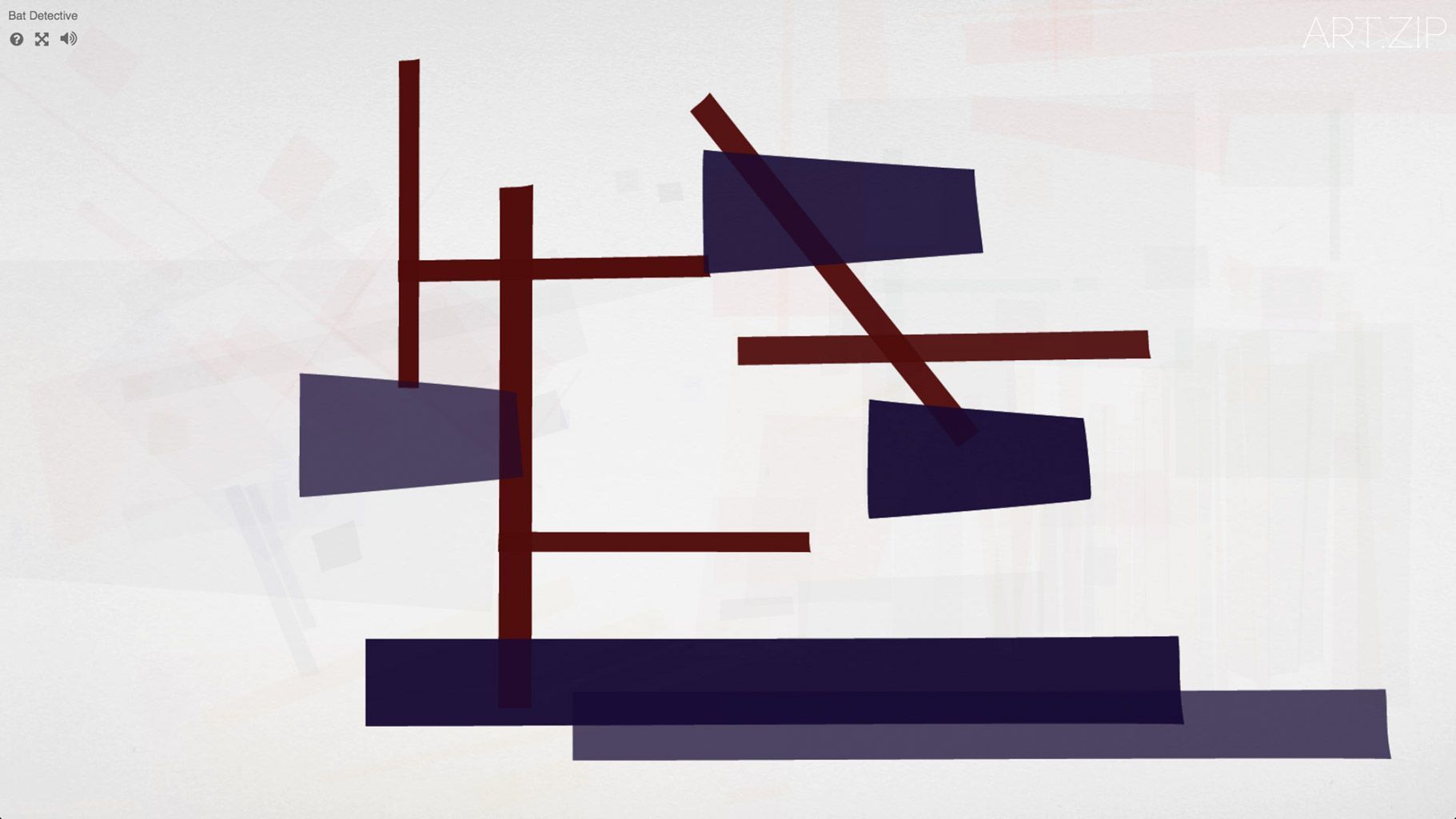
Julie Freeman, ‘We Need Us’, 2014. Production still, courtesy the artist. Commissioned by the ODI and The Space.
ART.ZIP: Do you mean social media?
HR: Yes, as well. You mentioned Electronic Superhighway, nearly all the works in the first room are responding to distributed images that we experience and download and share online. It seems, in my view, that the art world never really understood the power of pioneering software artists. Christiane Paul argues that to ‘get’ media art you need media literacy and you need to understand not just the art history but the science and technology histories that go with them. To me, I think a media art work is probably a work that responds to the full dimension of a technological proposition. I’m very interested in the process of making and methods of production artists apply.
ART.ZIP: 您指的是社交媒體嗎?
HR: 是的,都包括。正如展覽《電子高速公路(Electronic Superhighway)》,在一號展廳裡幾乎所有的作品都是對那些我們在線上體驗、下載或者分享的圖像的回應。在我看來,藝術世界從未真正理解先鋒軟件藝術家。克裡斯蒂安·保羅(Christiane Paul )說,要理解那樣的作品,首先需要了解各類媒體,而且,不僅要了解藝術家同時代的藝術史,還有科技史。對我而言,媒體藝術也許是全方面回應科技命題的藝術。我對藝術家所采用的創作方法和創作流程非常感興趣。
ART.ZIP: And ideas of labour and even craft perhaps? What’s your view on the idea of craft in relation to new media, in a field where the term is often dismissed?
HR: it depends who you’re talking to. I’m working at the moment as a curator in residence for the Open Data Institute. This year we’ve got a sound artist in residence called Alex McLean who’s a pioneer of live coding. Central to his practice is an interest in patterns and he extends that to pre-electronic digital technologies such as knitting and weaving. He’s researching different narratives with various craft people. He’s interested in challenging the hacker narrative of software art and coding to offer more expansive histories of us as humans capturing data in pattern forms, distributing it and giving it meaning. His practice is very current, very expansive and asks questions about those definitions that we’ve all experienced in certain hierarchies. I’ve spent my entire professional career working in science organisations or technology organisations, but on art projects. If a project is going to work across disciplines you have to get rid of some of these hierarchies, otherwise you’re dismissing too much stuff.
ART.ZIP: 或許還有勞動的想法,甚至技藝?您是怎麽看新媒體中的“技藝”問題的?在這個領域,這個詞似乎是被遺忘的。
HR: 這取決於我們和誰討論這個話題。我目前在開放數據學院當駐地策展人,今年我們這裡有一位駐地的聲音藝術家,名叫阿萊克斯·麥克林(Alex McLean),他是現場編碼的先鋒。他的藝術實踐中很核心的一點是他對樣式的關注,他把這種興趣延伸到前電子數碼技術上,比如說編織技術,他與各類型的工匠藝人合作,共同探索不一樣的敘事。挑戰軟件藝術和編碼中的黑客敘事便是他的興趣所在,他給作為人類的我們展現了更廣闊的歷史圖景——我們是如何通過模式的形式獲取數據、發送數據,給予數據意義的。他的藝術實踐是很當下的,廣闊的,他提出的問題關乎某些定義,而這些問題我們大家在某些等級結構中都經歷過的。我的整個職業生涯都在科學或科技機構中進行藝術項目。要做到跨學科,你就必須擺脫所有的等級結構,否則,妳會錯失太多的東西。
ART.ZIP: In an interview you gave while at the Science Museum, we are interested in the way you described art as a having the potential to shed a critical light onto technology, how would you negotiate that relationship, in the context of a large institution such as the Science Museum, between art as on the one hand a tool to render technology accessible and yet being critical of it?
Hannah: I wouldn’t use the term tool, because it makes the art sound utilised or used. Artists raised the issue of avoiding the word ‘use’ in relation to working with art at the Science Museum with me very early on. If we made it sound as if we were using the art, they didn’t like it. I think that I have to concede that, although I didn’t use the art, other colleagues might have had other motivations for including art. But what we were hoping to do, was to bring in the art to offer different perspectives, which was very much part of an interpretation strategy that started to acknowledge multiple voices, to challenge the Victorian talking down to approach, telling visitors what to think, to be more discursive. That’s a contemporary approach to museology; it isn’t unique to the Science Museum. But it was quite important in the Science Museum because in science museums, research suggests, visitors expect to be told what to think. So the art is there to challenge those assumptions. It is quite challenging to write really great art interpretation that communicates everything about why an art work is in a science museum, I’m not sure I’ve ever cracked it!
ART.ZIP: 您還在科學博物館工作時有一篇訪談裡有一個觀點很有趣,您說藝術能成為對科技進行批判的潛在形式。在諸如科學博物館之類的大型機構環境中,一方面藝術作為工具使得科技可以為人所接受,而另一方面藝術又對科技有批判性,您是如何調和兩者的關係的?
HR: 我不會用“工具”這個詞,因為這個詞帶有太多的實用主義意味。在很早之前,藝術家與科技博物館合作藝術項目時就會跟我提到要避免“使用/利用(藝術)”一詞。如果我們讓項目聽起來像是“利用藝術”,藝術家們都會不樂意的。我想我們也必須承認,儘管我沒有“利用”藝術,但機構裡的其他同事也會懷著其他動機來把藝術囊括進來。我們所希望的是,讓藝術提供不同的角度,這也是一種闡釋的策略,其開始承認多種聲音,挑戰“自上而下”的話語方式,挑戰告知參觀者該想什麽的做法,而讓觀眾更加信馬由韁。這就是當今博物館學的手段,這也不僅僅適用於科學博物館。這是很重要的,因為研究表明,在科學博物館裡,參觀者總是會期待別人告訴他去想什麽。因此藝術在這裡就能打破這層堅冰。要寫出一份出色的藝術作品闡釋文本,與觀者溝通為什麼這件作品在科學博物館裡如此重要,這是非常具有挑戰性的任務,我都不確定我有沒有攻克這種挑戰!
ART.ZIP: In terms of interactions and the role of social media, with the museum space, where the museum becomes the starting point of conversations that are then extended online, is that something that you integrate in your curating process?
HR: Personally I haven’t done it very much; one reason is that I had two children very closely around the point when social media lifted off. I kind of missed the boat! However, what I’ve observed are things I commissioned just before having my kids did develop a big life of their own online through visitors’ posting stuff on social media, like Listening Post by Ben Rubin and Mark Hansen. I didn’t commission it, but I purchased it for the museum. The Cockroach Tour of the Science Museum by Superflex has a very strong life online which we didn’t plan, but which affected thinking about interpretation later on. I do see museums starting to consider social media but I don’t think any museum has really made it work yet. I think one of the reasons is that you have to give up the control and I think that it’s really difficult for organisations to let people drive the agendas when the institution has constructed it already. Social media does merge a lot with the curatorial and I foresee that it’s going to become a much stronger dialogue moving forward. All organisations do think more about ways to communicate outwards now.
ART.ZIP: 在互動和社交媒體角色的問題上,讓博物館成為對話的起點,然後拓展到線上,這種做法是不是也融合到您的策展中?
HR: 從我個人來說,我並沒有做多少這方面的工作。一個原因是,當社交媒體興起的時候我正帶著兩個孩子,所以我錯過了社交媒體這波熱潮。但是,據我觀察,我在生小孩之前的委託藝術項目,像本·魯賓(Ben Rubin)和馬克·漢森(Mark Hansen)的《聽帖(Listening Post)》,通過觀者在社交媒體發布帖子茁壯發展了起來。我並沒有委托定制這個項目,但我為博物館把這個項目買下來了。丹麥藝術家團體Superflex的藝術項目《蟑螂旅遊之科學博物館(The Cockroach Tour of the Science Museum)》在線上的生命力很強,像這樣的項目我們事先也沒有想到,但這給我們後來的藝術闡釋工作起了借鑒作用。我確實也看到了許多博物館開始考慮社交媒體這一點,但在我看來,目前沒有任何一家博物館成功過。我想這其中的原因之一便是妳必須放棄控制,在妳已經架構好的議程裡讓人們自由駕馭,這是很難的。社交媒體和策展確實大幅度融合了,我也預測,這股潮流會變成更強的對話,並持續發展。所有的組織都比以往更加努力地考慮如何和外界交流的問題。
ART.ZIP: Maybe a consequence of that, is to ask what the form of those online conversations will be? What the potential of the design of social media interfaces, for instance, can have critically?
HR: The big difference is that people can enter into a dialogue with one another and that’s really interesting, but if you look at it, unless it is edited in some way and channelled, the level of communication is pretty basic. It’s ‘here’s me in front of the work’, ‘l like it, I love it, I hate this because…’ it can be quite simple. I think you would have to introduce some elements of choreography or control to bring more of a critical edge to the conversation. I mean, it’s a super souped-up version of the traditional visitor comments book. The traditional visitor comments book gets less interesting questions if they’re not directed. I think questions include: what would create the right conditions for really deeper, meaningful conversations? What would give people permission to do that, what would set the tone? There are a lot of questions I would like to ask if someone really wanted to harness social media in that way.
ART.ZIP: 也許這樣的結果會促使我們思考那些線上對話的形式是什麽樣的?比如,社交媒體的交互界面在未來會有怎樣的設計?
HR: 最大的不同是,人可以自由地和彼此對話,這是很有趣的,但是如果這整個過程是一個觀看的過程,那麽除非有特別的方法編輯和調配,否則交流的層次是很基礎的。不外乎是“我就站在這作品前面”、“我挺喜歡的”、“我很喜歡”、“我不喜歡因為……”,這種對話就非常簡單了。我想必須引入一些編排或者控制,從而讓對話變得更富有深度。我的意思是,這應該是傳統來訪者留言本的加強版。如果不加引導的話,傳統的來訪者留言本上有意思的問題將會越來越少。我想,問題的關鍵在於,怎樣能創造合適的條件使真正深入、有意義的對話得以形成?而又是什麽提供給人們深入對話的條件,基調又是由什麽定下的?如果要使用社交媒體,那我就有諸如以上的許多問題。
ART.ZIP: Do you think there’s still potential for online curating though? Or has the moment passed?
HR: I think that there are different generations responding to different ways. Those of us who have been around and have seen the entire arc might feel we’ve said everything but I’m absolutely sure that there are 15 year olds who have things to say about it that I can’t imagine because their experience of the world is a world away from mine. I wouldn’t want to assume that different people who have a different experience of this really speedy technology wouldn’t have some different questions than me.
I’ve never been attracted to curate online per se because I like to work with physical space and I like being in command of that space with an artist and to develop physical encounters with art, with art that is multisensory. On the other hand, I think there’s a really big question, at the moment, about the purpose of physical spaces, museums and galleries in a world where most of us don’t go there to acquire the knowledge. We might have gone there 20 years ago, but now that knowledge is in our smartphones. So the biggest knowledge distribution system is not the library and museum system, it’s the Internet and that shifts things.
ART.ZIP: 您覺得現在在線策展還有潛力嗎?還是說在線策展的時期已經過了?
HR: 我想不同輩的人對這個問題有不同的回應。對於我們這些一直從事這一行,見過整個歷程的人來說,我們會覺得我們把一切都說盡了,但我也萬分確信,對於一個15歲的人來說,他們還有一些我們想象不到的話要說,因為他們的經歷和我們的截然不同。我不會認為,有著不同經歷的不同人,在面對如此迅猛發展的技術時,他們的問題會和我如出一轍。
線上策展本身對我沒有多大的吸引力,因為我喜歡實體的工作空間,我喜歡和藝術家合作掌控那樣的空間,發展那些能夠讓觀者產生多重感官體驗、有著實際接觸的作品。從另一方面來看,我覺得目前有一個大問題,在這樣一個我們大多數人都不會去實地獲取知識的世界裡,實體空間,比如說博物館和畫廊的目的何在?我們20年前也許會去,但是現在知識就在妳的智能手機裡。所以最大的知識集散系統不是圖書館和博物館,而是因特網,而這,把一切都改變了。
ART.IP: Then it poses an epistemological question, what’s the nature of that knowledge produced online and what are the parameters and filters required to process that information as for instance the ‘bubble effect’, when there’s too much information?
HR: Well you still need to be informed, I can find stuff online because I know what I’m looking for. I am astonished frankly at the papers, the catalogues, the things that are online now, that were not online six years ago. I know what I’m looking for, so I think there’s the question of how you find what you’re looking for, but I think that the level and depth of what you can get from your desktop is phenomenal.
ART.ZIP: 這就提出了一個認識論問題,線上生產的知識本質是什麽?在這樣一個有著太多信息的時代,我們需要有什麽樣的參量和過濾器來處理這些如“氣泡效應”的信息?
HR: 說到底,我們還是要獲取信息的,我在線上可以找到我要的東西因為我知道自己要找的是什麽。坦白說,線上海量的論文、畫冊等等讓我很驚訝,六年前,這些東西都沒有。我知道自己要找什麽,所以我認為問題是,妳要知道自己要找什麽,但總的來說,從電腦上獲取的東西的層次和深度是令人嘆為觀止的。
ART.ZIP: As long as you know what you’re looking for. There’s perhaps a need to be guided?
HR: I think it’s a new life skill, we used to have librarians. There are very few proper librarians any longer. Who are the librarians of cyberspace?
ART.ZIP: 只要知道妳自己要找的是什麽——那或許這其中有引導的需要?
HR: 我覺得這是一項新的生活技能,我們以前有圖書管理員。現在真正意義的圖書管理員很少了。誰是網絡空間的圖書管理員呢?
ART.ZIP: Maybe there’s also a lack of an appropriate language. Mathew Fuller wrote about the misleading metaphors such as the cloud or the bin we are using in describing technology. Is that something you struggle with when you have to articulate a curatorial narrative?
HR: The thing I’m struggling with is the fact that, ironically we need to differentiate between art and science in order to discuss our combined intentions, to bring them together. So you’re constantly toggling between specialism and the desire to branch out and I think that we are evolving different languages. The problem with the languages you referred to is that they are corporate-led. They’re going for the lowest common denominator because they want mass understanding right now, because they want mass buying right now. This is where I think artists are so important in this field, we need artists to make us stop and think. To consider the language, to consider the impact that language has on our thinking, which needs to be challenged because even if you look at your encounter with your desktop today, for me, compared to the desktop I first started working with in the late 1980s the guts are less visible. So we have a very seamless experience of computing that doesn’t let us know what we are being sucked into and that worries me. We think in Google documents now, we think in Twitter characters. Someone will come up with something that’s better. Our experience is always rooted in our existing knowledge, and I think that people who come up with a different knowledge, will make different metaphors and that’s how the language will evolve.
ART.ZIP: 我们也許缺乏一种合适的语言。马修·富勒曾經写到,我们使用了很多误导人的隐喻来描述科技,比如云、垃圾桶等。这在你必须清晰地表述策展叙事时,会是一件难事吗?
HR: 我觉得困难的地方在于,很具讽刺意味地,我们必须区分艺术和科学,从而更好地讨论我们融合两者的意图。因此,我们会在精专和扩展中踌躇。我认为我们演化出了不同的语言。你说的语言问题在于这些东西都是大公司引导的,他们必须有最小公分母,他们希望大众能够马上理解,因为这样大众就能够马上消费。这就是我认为为何艺术家在这个领域是如此重要,他们要让我们停下来好好想一想,考虑一下,这种语言对我们的影响,这是我们要反思的。看看我们今天在电脑上看到的一切,和我1980年代后期刚开始使用电脑时桌面上的一切,对比一下,你会发现,如今电脑内在、本质的东西更不容易被发觉。我们有着无缝的计算体验,这掩盖了我们被电脑所吸附的事实,这也是让我觉得担忧的一点。我们以谷歌文件、推特字符的模式思考。总有人会想出更好的东西。我们的经验总是基于我们现有的知识,我想给我们带来不同知识的人们会制造出新的隐喻,这就是语言演化的方式。

